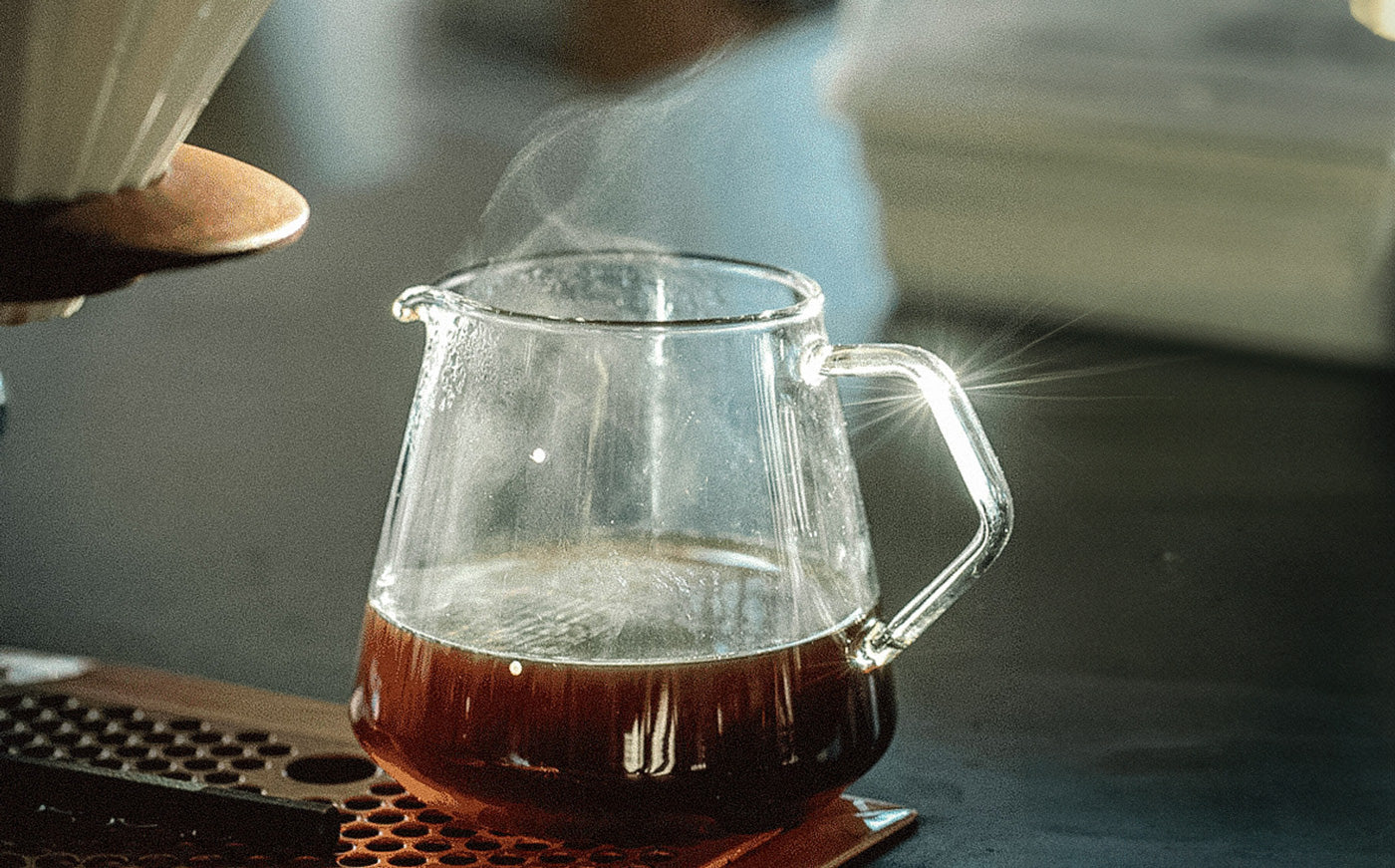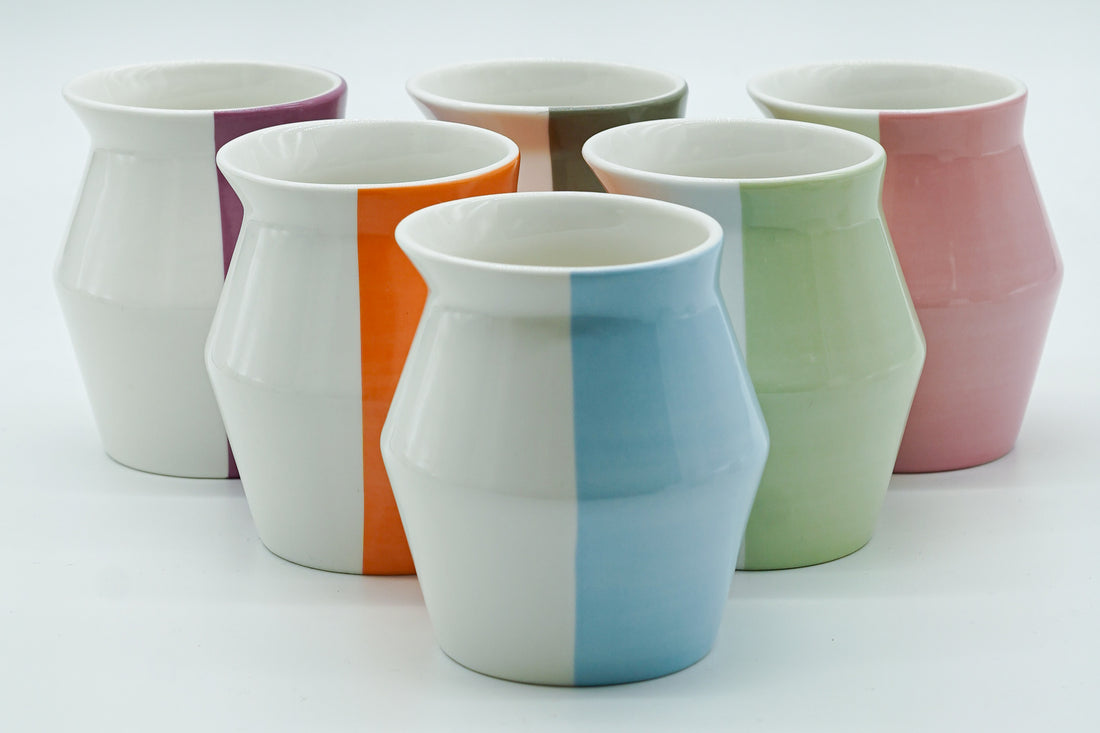No machine at hand
You want a coffee but don't have a coffee machine handy... whether you're camping or in a vacation rental, or your machine is broken. There are many reasons. But what does "no machine" mean? We'll assume that you don't have an electronically functioning machine like a fully automatic coffee machine, a filter coffee machine, or a portafilter. And to be fair, we'll also leave out the stovetop kettle – making coffee as simply as possible is the motto.
Method 1: Brew coffee in a pot (Cowboy Coffee)
If you don't have a coffee maker handy, you don't have to go without coffee—in fact, you can make a full-bodied cup of coffee with simple means, even without technology. The most classic method is boiling in a pot, also known as "cowboy coffee." Bring water to a boil in a small pot, then remove it from the heat and stir in coarsely ground coffee (about one tablespoon per 200 milliliters of water). The coffee should now brew for about four to five minutes. Once the coffee grounds have settled, you can carefully pour the coffee into a cup—a small splash of cold water helps to dissolve the suspended particles more quickly.
Method 2: Hand infusion with filter
One Another option is hand infusion. For this you only need a

A makeshift filter—for example, a fine metal sieve, a piece of cloth, or, in a pinch, even a paper towel in a funnel. Coarse to medium-coarse ground coffee is placed in the filter and slowly poured over with hot water. The water should not be boiling hot, but rather around 92 to 96°C. This method produces a clean, clear coffee with little grounds—ideal for filter coffee fans.
Tip: Coffee filters can be improvised – e.g. E.g. with kitchen paper in a funnel, with fabric in a funnel or with other fine-pored materials.
Method 3: French Press (if available)
Here, and also in the previous point, one could already begin to discuss what constitutes a "coffee maker" and what doesn't. We still want to talk about the French press. Anyone who owns a French press can also use it without electricity. To do this, coarsely ground coffee is poured over hot water in a ratio of about 1:15 (e.g., a 1:10 ratio). B. 30 grams of coffee to 450 milliliters of water). After a brewing time of four minutes, slowly press the plunger down and you can enjoy the coffee straight away – full-bodied and with a strong body .
Method 4: Cold Brew as an alternative
Finally, there's cold brew – a cold brewing method that requires no heat at all. Coarsely ground coffee is mixed with cold water, roughly in a ratio of 1:8, and left to steep in the refrigerator for 12 to 18 hours. The coffee is then strained through a fine sieve or filter. Cold brew is particularly mild, less acidic, and ideal for hot days – without the need for a machine or stove.
Water quality and grind size – small cause, big effect
Even without a coffee machine, you should pay attention to two inconspicuous factors that make a huge difference: good water and the right grind. Use filtered or soft water whenever possible – tap water with a high lime content can significantly impair the taste of your coffee. According to the SCA, the Specialty Coffee Association , there are very specific requirements for perfect coffee water. These include a hardness of 3 to a maximum of 10 °dH.
Equally important is the grind size. A medium grind is recommended for methods such as the hand filter or the cup-and-strainer brewing method. When brewing with a French press, the coffee should be ground rather coarsely. If the grind is too fine, the coffee will quickly become bitter or contain too many suspended particles.
No grinder handy? No problem!

If you don't have a coffee grinder on hand, there are some creative alternatives to grind coffee beans anyway - depending on what you have on hand:
- Mortar and pestle – Particularly good for coarse grinding, e.g. E.g. for French press. Just apply a little patience and pressure.
- Mixer or blender – Pulse in short intervals to prevent overheating the beans. Works best for medium grinds.
- Food processor – Like a blender: chop in portions using short pulses.
- Rolling pin or glass bottle – Place the beans in a freezer bag, seal it tightly, and then crush them with a rolling pin. For a coarser grind.
- Hammer or meat tenderizer – Also in a freezer bag and use carefully – rather rough, but effective in an emergency.
Important: Make sure that your "improvisation tool" is clean and does not absorb any foreign substances or aromas.
Common mistakes and how to avoid them
A few common pitfalls are easy to avoid. Never use rolling boiling water – the water should be around 92 to 96°C, meaning it should have cooled slightly one minute after boiling. Otherwise, bitter substances can be extracted, ruining the flavor.
Also important: don't use too much ground coffee, or the coffee will be over-extracted. And if you don't have a fine sieve handy, aim for a coarse grind so that too many coffee grounds don't collect in the cup. This will keep your coffee pleasantly clear and balanced.
Remember: the coarser your coffee, the longer you can let it brew.
Overview for coffee without a machine

|
Point |
|
Recommendation |
|
Grinding degree |
|
Coarse to medium-coarse |
|
Water quality |
|
Filtered water at 92–96 ° C |
|
Rest time |
|
Depending on the method 3–5 minutes |
|
Filter |
|
Cloth, paper or fine metal sieve |
|
container |
|
Ideal: glass jug, pot, French press or pitcher |
Conclusion
In summary, as long as you have a container, a heat source, water, and the ability to brew ground coffee, you can brew yourself a cup of coffee. It might not taste as great as it would with the right equipment/machine, or even from your barista—but let's face it: no coffee isn't a solution either.




